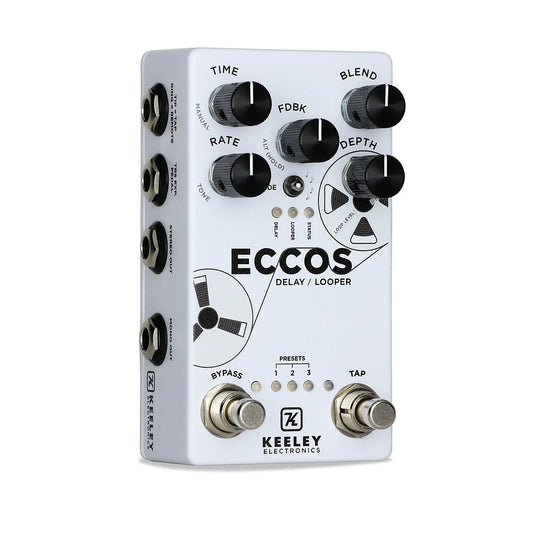Adding new effects to your pedalboard creates unique and interesting sounds. Guitar looper pedals are a great addition because they deliver versatile guitar effects that allow guitarists to create layered performances on the fly.
A looper pedal is a great addition to your guitar rig because it lets you record and playback musical phrases, creating layered performances. Essentially, you can become your own accompanist and can experiment with harmonies, create complex arrangements and use your guitar to deliver incredible live performances even if the rest of your band is nowhere in sight.
Whether you’re a songwriter, solo performer or just looking to have a little fun, a looper pedal creates incredible opportunities for innovating creative sounds. The possibilities are endless, and you’ll be amazed at the layered, intricate performances you’ll deliver while using this powerful tool.
What Does a Guitar Looper Pedal Do?
Looper pedals are versatile tools and have one or more footswitches that allow access to various controls and features. For example, you can control overdubbing/layering, playback, recording and stop/start. After activating the pedal with a footswitch, you simply play a chord progression or riff and the looper pedal will record what you’re playing. You then hit the footswitch a second time and begin the playback. As the loop begins to play, you can add additional layers or parts to play along with the loop. You can even stack multiple layers with typical looper pedals and play them on top of each other, allowing you to create a range of sounds and rhythms.
Where Does a Looper Pedal Go in the Chain?
Guitarists have a few options regarding where to place the looper pedal in the chain. They include:
- At the beginning of the Chain – Placing this pedal at the start of the signal chain lets you record and loop a clean guitar sound. This captures the pure sound before applying any effects.
- After Dynamics Effects – Placing the loop pedal after the dynamics effects, such as Wah or compressors, will yield a more controlled and a smoother loop recording.
- Before Modulation and Time-based Effects – Using this placement lets guitarists create loops with applied time-based effects and modulation.
- In the Effects Loop – Place the looper pedal in the effects loop if your amplifier has one. In this setup, the loop sound is processed after the preamp stage, which preserves the amp’s tone integrity.
How to Choose a Guitar Looper Pedal
When choosing a new looper pedal, consider the most important factors. They include things like:
- The number of available loops
- The loop length
- The storage capabilities
- The stereo capabilities
- Ease-of-use
- Additional features
- Brand recognition
- Positive testimonials
- Positive online reviews
Keep all of these factors in mind when choosing one or more new guitar looper pedals to add to your signal chain.


